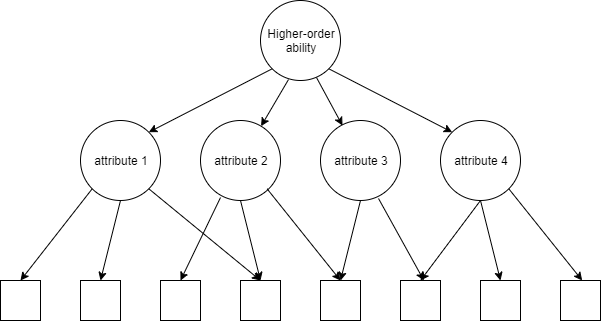3.15 The higher-order model for joint attribute distribution
The higher-order model (de la Torre & Douglas, 2004) assumes that the mastery of each attribute is influenced by a higher-order latent trait.

The relation between the higher-order ability and attributes can be defined using IRT-type models, such as the two parameter logistic model:
\[\begin{equation} P(\alpha_k=1|{\theta})=\frac{\exp[a_{k}(\theta-b_k)]}{1+\exp[a_{k}(\theta-b_k)]}, \end{equation}\]where \(a_k\) is the discrimination of attribute \(k\) and \(b_k\) is the difficulty of attribute \(k\).
We can also set \(a_k=a\) for all attributes and the resulting model is a one-parameter IRT-type model (Thissen, 1982).
References
de la Torre, J., & Douglas, J. A. (2004). Higher-order latent trait models for cognitive diagnosis. Psychometrika, 69(3), 333–353. https://doi.org/10.1007/bf02295640
Thissen, D. (1982). Marginal maximum likelihood estimation for the one-parameter logistic model. Psychometrika, 47(2), 175–186. https://doi.org/10.1007/BF02296273